Training a coonhound is more than just teaching commands; it’s about building a bond and understanding their unique nature. These dogs, bred for their exceptional scent-tracking abilities, are not just hunting companions but also loving family pets. Whether you’re working with an American English Coonhound, a Black and Tan Coonhound, or another breed, the key to successful training lies in patience, consistency, and positive reinforcement.
Coonhounds are known for their independent streak and strong prey drive, which can make training challenging. However, with the right approach, you can channel their energy and instincts into productive behavior. The American Kennel Club recognizes these breeds for their rich history and versatility, whether in the woods or at home. By understanding their physical traits, such as their distinctive coats and keen sense of smell, you can tailor your training to meet their needs.
Positive reinforcement is a cornerstone of effective coonhound training. Rewarding good behavior with praise and treats encourages your dog to repeat those actions. This method not only strengthens your bond but also helps your coonhound develop confidence and focus. As you progress, you’ll learn how to balance their hunting instincts with family life, creating a well-rounded companion.
Understanding the History and Characteristics of Coonhounds
Coonhounds have a rich history that traces back to early American times, making them a unique breed with distinct traits. Their lineage is deeply rooted in British Foxhounds and other English breeds brought to America in the 17th and 18th centuries. These dogs were bred to excel in scent tracking, making them invaluable for hunters.
Origins and Breed Lineage
The American English Coonhound, for instance, evolved from English Foxhounds and was primarily used for hunting foxes and raccoons. Similarly, the Black and Tan Coonhound descended from the Talbot Hound, known for its robust build and distinctive black and tan markings. Other breeds like the Bluetick, Plott, Redbone, and Treeing Walker each have unique origin stories, contributing to the diversity within the coonhound family.
Distinctive Traits and Physical Features
Coonhounds are known for their striking appearance. They often feature ticking coats, floppy ears, and muscular builds, with color patterns like the black tan markings on the Black and Tan Coonhound. These physical traits not only define their looks but also play a role in their hunting prowess. Their keen sense of smell and endurance make them excellent trackers, capable of handling tough terrains and long hours in the field.
Understanding the lineage and physical characteristics of coonhounds is essential for effective training. Their independent nature and strong prey drive, passed down through generations, require a tailored approach. By recognizing these traits, owners can better connect with their pets, fostering a partnership that honors both the dog’s instincts and the owner’s goals.
Decoding the Natural Instincts of Hound Behavior
Understanding the instincts of your coonhound is key to effective training. These dogs are born with a strong prey drive and a keen sense of smell, traits that have been honed over centuries of hunting. Their independent nature means they often follow their nose rather than immediate commands, making patience and consistency essential.
Independent Thinking and Scent-Driven Actions
Coonhounds are naturally self-motivated, relying on their powerful noses to track and hunt. This instinctual behavior is rooted in their history as working dogs, often operating independently in the field. Their ability to follow a scent trail without constant guidance is a testament to their breeding.
Historically, hounds like the Treeing Walker Coonhound would bay to signal finding prey, allowing hunters to follow. This self-reliance is a trait that modern owners should acknowledge and respect in their training approach.
The Role of the Nose in Hunting and Tracking
The nose is a coonhound’s most valuable asset. Their scenting ability is unparalleled, driving their hunting behavior. Physical traits like long ears and a smooth coat aid in sweeping scent particles towards their nose, enhancing tracking efficiency.
While coonhounds are independent hunters, they also form strong family bonds. This balance of autonomy and affection makes them unique companions. Recognizing these instincts is crucial for designing training that aligns with their natural tendencies, ensuring a harmonious relationship between owner and hound.
For more insights into specific breeds like the Treeing Walker Coonhound, understanding their instincts can lead to more effective training strategies.
Preparing Your Environment and Daily Routine for Training
Setting up the right environment and establishing a consistent daily routine are crucial for effective coonhound training. These steps help manage their high energy levels and natural instincts, ensuring a balanced and focused companion.
Creating a Safe Off-Leash Space
A secure, off-leash area is essential for your coonhound to exercise freely. Ensure the space has sturdy fences and ample room for movement, allowing your hound to explore without escaping or encountering distractions.
Schedule regular off-leash sessions to let your coonhound exercise both physically and mentally. These sessions can include scent work, which stimulates their hunting instincts and keeps them engaged.
Managing distractions like wildlife is key. Use a controlled area for training to minimize external scents and noises, helping your coonhound stay focused.
A calm, secure environment reduces over-excitement and destructive behavior indoors. Consistency in routine aids in managing energy levels and natural drives, promoting a well-adjusted pet.
Effective Basic Training for Your Coon Dog
Training your coonhound effectively involves a combination of positive reinforcement and engaging their natural instincts. This approach not only helps in developing desired behaviors but also strengthens the bond between you and your hound.
Positive Reinforcement and Food Motivation
Positive reinforcement is a powerful tool in coonhound training. By rewarding desired behaviors with treats and praise, you encourage your dog to repeat those actions. Food motivation is particularly effective, as it provides a clear incentive for your hound to focus and learn.
For instance, using small treats during obedience exercises can help transition an independent coonhound into a more responsive pet. This method is especially useful when combined with scent work, as it channels their natural hunting instincts into productive activities.
Implementing Scent Work and Tracking Techniques
Coonhounds are renowned for their scent-tracking abilities, making scent work an ideal training activity. Start by introducing basic tracking exercises using raccoon or other animal scents. This not only engages their instincts but also provides mental stimulation.
Begin with simple trails and gradually increase the difficulty. Consistency and clear communication are key; use commands like “follow” to guide your hound. Over time, your coonhound will develop the skills needed to track effectively, whether for hunting or companionship.
Early introduction to structured scent work offers long-term benefits, enhancing both behavior and performance. By balancing obedience training with scent exercises, you create a well-rounded and responsive coonhound.
Addressing Common Training Challenges and Behavioral Issues
Every coonhound owner faces unique challenges, from managing over-excitement to dealing with stubbornness. These issues often stem from the breed’s independent nature and strong prey drive. Understanding these traits is the first step toward overcoming them.
Managing Over-Excitement and Independent Behavior
Coonhounds are naturally energetic and driven by their instincts. This can lead to over-excitement, especially when they catch a scent. One effective strategy is to channel this energy into structured activities like scent work, which keeps them mentally stimulated and focused.
Consistency and patience are key. Set clear boundaries and use positive reinforcement to guide their behavior. Brief, effective training sessions can help curb unruly tendencies, ensuring your coonhound remains responsive and well-behaved.
Regular breaks and rest periods are essential to prevent burnout. This approach not only aids in training but also strengthens the bond between you and your hound. For more insights on managing these challenges, visit our puppy training guide.
Enhancing Bonding and Communication with Your Hound
Building a strong bond with your coonhound is essential for effective training and a happy relationship. These dogs thrive on connection and mutual respect, which fosters a partnership rooted in trust and understanding.
Building Trust Through Consistent Interaction
Consistency is key to building trust with your hound. Regular interactions, such as daily play and structured training, help establish a routine that your dog can rely on. Positive reinforcement techniques, like offering treats and praise, encourage good behavior and strengthen your bond.
Engaging in scent work and collaborative games not only challenges your hound mentally but also deepens your connection. These activities require teamwork, reinforcing the idea that you and your dog are partners.
Cultivating a Partnership Based on Mutual Respect
Mutual respect is the foundation of a successful partnership with your coonhound. Recognizing their independent nature as a strength allows you to tailor your approach, respecting their instincts while guiding them gently.
Treating your hound as a family member and equal partner can reduce behavioral issues. Activities like scent-based challenges and interactive training sessions nurture both physical and emotional well-being, creating a harmonious relationship.
Wrapping Up Your Training Journey and Celebrating Success
As you conclude your training journey with your coonhound, remember that every small victory is a step toward a stronger bond with your hound. Positive reinforcement and structured training have transformed your dog’s behavior, fostering obedience and trust. The rewards of your efforts are evident in the improved connection you share with your hound.
Celebrate the milestones, no matter how large or small, as they highlight the progress you’ve made together. Consistency is key, and every challenge overcome brings you closer to a harmonious relationship. While training an independent hound comes with its unique difficulties, the journey is incredibly rewarding.
Continue refining your techniques and enjoy the process of nurturing your coonhound’s growth. Every training session strengthens not only your hound’s skills but also your partnership. Share your success stories to inspire others embarking on similar paths with their dogs.
FAQ
What is the best way to train a Coonhound?
Coonhounds respond well to positive reinforcement and scent-based training. Start with short sessions, using treats and praise to encourage good behavior. Consistency is key to developing their tracking skills.
How much exercise does a Coonhound need daily?
Coonhounds require at least 1-2 hours of exercise each day. This can include walks, playtime, and off-leash adventures in safe areas. They thrive on physical and mental stimulation.
Are Coonhounds good family pets?
Absolutely! Coonhounds are known for their gentle and affectionate nature, making them excellent family pets. They are generally great with children and other pets if socialized properly.
How do I care for a Coonhound’s coat?
Coonhounds have a short, easy-to-maintain coat. Regular brushing with a soft brush and occasional baths are sufficient. Their coat requires minimal grooming compared to other breeds.

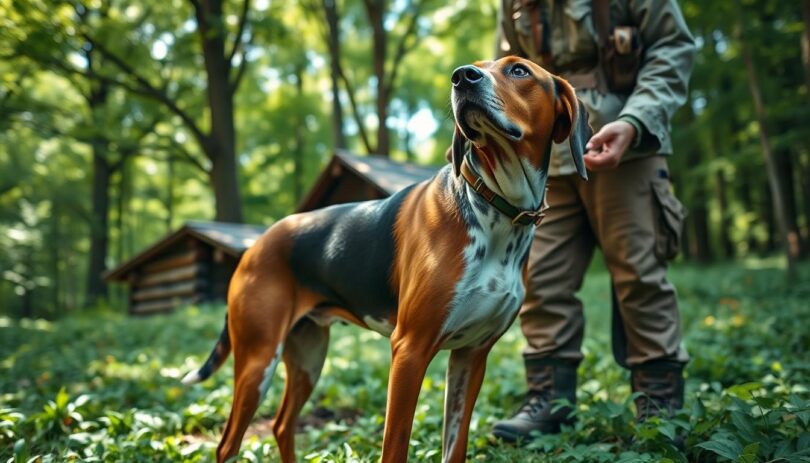

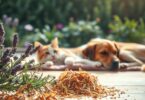
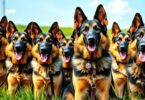


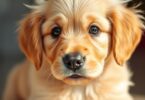
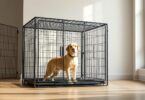

Leave a Comment